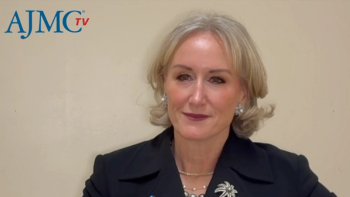
Clinical Pathways for Cardiovascular Disease Management
Variables considered by payers when creating clinical pathways to best manage patients at risk for cardiovascular events.
Transcript
Deepak L. Bhatt, MD, MPH: Maybe I can turn now to Eric Cannon to ask him to share a payer’s perspective. It seems as if there are good data in cost effectiveness. Do you actually utilize or force utilization of different clinical care pathways or protocols to treat patients at high cardiovascular risk? And is there any merit in that approach to not only approving care and outcomes but reducing costs?
Eric Cannon, PharmD, FAMCP: Yeah, you bet. If you look at the way we’re delivering health care, if you look at SelectHealth, which is part of the Intermountain Healthcare system, 40% to 60% of the business that is coming into our system is in some kind of prepaid health care format. So risk is shared between the plan and the delivery system. As we develop guidelines and pathways and protocols, and Adam Bress did a great job pointing out the cost-saving nature of icosapent ethyl, we try and surface that risk factor information in front of the physician at the time they’re seeing their patient.
A person who is diabetic, at high cardiovascular risk, and with elevated triglycerides is definitely a candidate for this therapy. Given that we’re in a prepaid environment, even if they have an event, we’re not going to get paid additional money. And so we’re really helping our clinicians understand that and then maybe not forcing them into the pathway but suggesting for them what those cost-effective alternatives are. That has been proven to be very successful for us.
Deepak L. Bhatt, MD, MPH: That’s really useful information. In a prior segment you mentioned a pharmacy benefits manager. That’s a very opaque process. Few physicians understand their role, and even fewer patients understand their role. I find it all a bit confusing to navigate, to be honest. What are some of the challenges in terms of monitoring total costs and issues? There are, of course, rebates and all sorts of things. Sometimes it makes it tough to know exactly who’s paying how much for what drug. Is there any way we can improve on the transparency around all these issues?
Eric Cannon, PharmD, FAMCP: Yeah, you bet. One of the things that has been a trend within health care is employers and consultants have those people, who are ultimately paying the bill, carve out their services to multiple providers. And so the more you silo the care or the payment of care, the more you lose access to that data. We found that to be critical. We need to have access to all the pieces of data. We’re the ultimate payer, so we cover all the pharmacy costs. We cover all the medical costs. We’re directing them into our system. We have all those data elements, and we’ve worked very diligently over the last couple of years to figure out how we bring that together.
In terms of cardiology, how do we surface that information and let them understand exactly what is being spent per patient per month, and then identify within that some of those costs? As we talk about cardiology or cardiovascular costs, we are helping to surface this percentage of that per-member-per-month cost that we’re showing you is because of PCSK9 inhibitors. And this cost is due to some of the interventional procedures that have been done. And really, we are helping them understand what those cost-effective aspects are. What are those initiatives or trends or pathways that they could follow that will ultimately lower that total dollar amount that we’re spending?
If you take some of the work that’s been done with REDUCE-IT to show great risk reduction, and you couple that with some of the work that’s been done with ICER [incremental cost-effectiveness ratio] and Adam Bress as far as cost-effectiveness, that allows us—because we’ve bucketed all the data into 1 place—to then surface these initiatives and these opportunities to deliver more clinically effective care to our patients, but do it at a lower cost and ultimately save us money over the long run as we treat these patients.
Newsletter
Stay ahead of policy, cost, and value—subscribe to AJMC for expert insights at the intersection of clinical care and health economics.









































